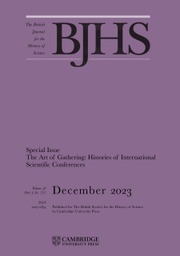Cultures of Prediction is a delightful and insightful read into the different modes of prediction that structure scientific and engineering research, although it is slightly hampered by a case study approach that makes it harder to fully accept the larger historical transformation posed by its arguments.
Ann Johnson died before this book was completed and Johannes Lenhard has finished their collaboration. Cultures of Prediction argues that, since the sixteenth century, at least four distinct cultures for predicting phenomena have existed in science and engineering: rational, empirical, iterative–numerical and exploratory–iterative. Rationalists argued that phenomena can be predicted entirely from mathematical laws; empiricists preferred to predict from mathematical models adjusted to empirical observations; iterative numericists used computational algorithms to predict solutions iteratively (reductively, by repeating trial-and-error calculations until finding or approximating a solution); exploratory iterators took this further by recursively using predictions to modify models without reference to empirical data before further rounds of exploration, prediction and iteration. These cultures have co-evolved with one another, leading to hybrids and a diversity of practice, and also with parallel developments in mathematics and technology, especially computerization.
Johnson and Lenhard argue that the existence of these cultures poses fundamental epistemological questions for philosophy of science, suggesting that scientific theories and models are not predominantly explanatory, as they claim is traditionally conceived, but rather predictive. As a historian, however, I orient my comments largely toward the book’s historical insights.
Although readers can study this book traditionally, from front to back, Johnson and Lenhard suggest an alternative passage, starting with the fourth chapter, a ‘hub’ chapter, and then moving backward and forwards to ‘precomputer’ and ‘computer-based’ eras, already hinting at the book’s larger historical narrative. I read the book this way, and so will begin with Chapter 4, a case study of quantum chemistry. Johnson and Lenhard argue that quantum chemistry demonstrates all four cultures of prediction through its twentieth-century life, particularly through two turns tied to computerization. The first turn was the appearance of the mainframe computer in the mid-twentieth century, which led to an exploratory–iterative culture that both continued and modified an existing rational ab initio culture of prediction (and spelled the end of an alternative ‘semiempirical’ rational-empirical hybrid culture). The second turn was the rise of networked PCs in the 1990s, which enabled new forms of social organization and collaboration, pioneering exploratory–iterative modelling methods that departed radically from the principled ‘ab initio’ culture.
This chapter forms the entirety of Part II. Moving backwards, Part I explores the rational and empirical cultures with a chapter on ballistics, showing the entanglement of rational and empirical cultures in episodes across three centuries, and a chapter on mechanical engineering, which was beset in the late nineteenth century by debates over mathematization and its relation to the cultures of prediction that engineers were trying to establish. Part III explores the appearance of an iterative–numerical culture alongside mainframe computers in the mid-twentieth century with a chapter on the history of ‘system dynamics’ and its high-profile deployment in the 1972 Limits to Growth study, and a chapter on computational fluid dynamics and its repurposing from Cold War weapons research to traffic modelling. Part IV investigates the rise of exploratory–iterative prediction, focusing on two case studies: Bayesian statistics and thermodynamics, and how the advent of networked PCs, in the case of Bayesian statistics, and adjustable parameterization, in the case of computational thermodynamic models, supported the development of an exploratory–iterative culture in both fields.
While the book is thus structured primarily as a series of case studies that demonstrate these cultures of prediction across diverse places, times and fields, this summary shows that there is a historical argument too. The authors suggest that the advent of computerization meant an iterative turn in science, away from rational–empirical modes of prediction and toward numerical and exploratory modes of iterative prediction enabled by, in the case of the former, mainframe computers and, in the case of the latter, networked personal computers.
I did not find this overarching historical argument quite as convincing as the book’s otherwise detailed and well-reasoned analysis. I would reserve agreement, rather than fundamentally disagreeing, with Johnson and Lenhard, because their historical arc seems plausible. I think, however, that their case studies approach makes it hard to demonstrate a process of structural transformation in scientific and engineering research whereby the tools and meanings of prediction comprehensively changed with computerization. For example, the authors suggest that the widespread adoption of networked PCs was central to the development of the exploratory–iterative culture, but it does not seem like networked PCs were important to the development of that culture in thermodynamics research, as shown in Chapter 8. This somewhat weakens the broader historical argument, but situating this in historical context is tricky because of the case study approach. I suspect that if the agenda from the outset had been investigating this historical transformation across science and engineering through the mid- and late twentieth century, the book might have looked quite different.
Having said that, I can otherwise only praise this remarkable book. It brings the humanities’ ‘temporal turn’ right into the heart of the history and philosophy of science and, in doing so, it offers a convincing framework for interpreting scientific practices, broadly construed, across time and space. Johnson and Lenhard have produced a wide-ranging and long-term account of prediction as a fundamental scientific practice and shown that this applies not just to the natural and physical sciences, but also to engineering and social science – really, to any form of research that uses calculation, computation or statistics. The value of this framework really should not be underestimated, and I’m excited to see how historians of science, social science and engineering can build on its insights.



